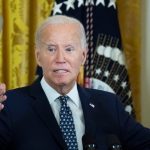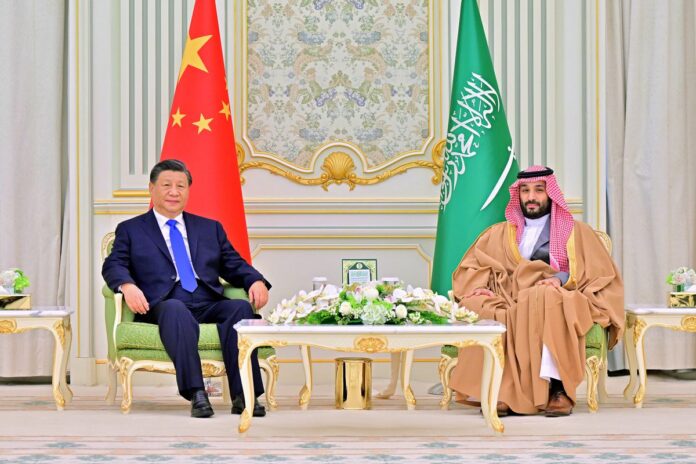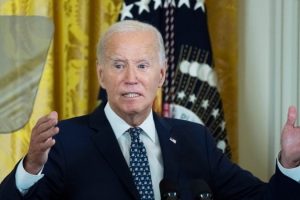Arab-Chinese relations have heated up considerably since the Chinese premier’s recent visit to Saudi Arabia.
The COVID-19 pandemic has posed a great challenge to China, with unprecedented lockdowns and occasional horror stories about the origins and spread of COVID-19 and how it has been treated, leading to protests throughout national scale that have been partially successful in easing the excessive restrictions imposed by COVID-19. President Xi Jinping, emboldened after being crowned for the third time by the 20th National Congress of the Chinese Communist Party (CPC), got a taste of popular anger and his own limitations, as the Chinese economy was also suffering and I noticed a downward trend.
During the three years of self-imposed quarantine of his own free will, President Xi Jinping ventured out only three times, beginning with the Shanghai Cooperation Organization (SCO) summit, when Iran was admitted and Saudi Arabia, Egypt and Qatar joined. they became dialogue partners; the G20 in Bali, when he was able to meet many leaders, including Biden, in his backyard; and, more importantly, his second visit to Riyadh in December 2022, when bilateral, GCC (Gulf Cooperation Council) and Arab summits were held with the participation of key satraps from the region.
His visit to Riyadh is often compared to US President Joe Biden’s awkward visit (against the rancor and recriminations between the Saudi and US leadership) in July this year in terms of pomp, depth and results. Sino-US geostrategic competition and the potential for conflict are very real, especially as the transitional world order continues to undergo dangerous upheaval. Riyadh and the Arab world want to exercise their options.
The threat of Chinese WZ-7 drones
In 2016, before his first visit in which he also went to Cairo and Tehran, an important “Arab Policy Document” was published that placed the strategic Middle East on the expansion paths of the Chinese BRI (Strip Initiative and the route). Trade and investment have continued to grow. China’s pursuit of energy security and maritime choke points dictated a dense rapprochement with the oil-rich region through its 1+2+3 matrix. It encompasses energy cooperation at its core, including related infrastructure; construction, trade and investment facilitation; and innovative and new technologies, including space, renewable and nuclear.
The COVID-19 pandemic has presented a great challenge to China, with unprecedented lockdowns and occasional horror stories about the origins and spread of COVID-19.
Collaboration has further expanded on defense and security, as Beijing has easily met regional leaders more than halfway. Not surprisingly, he has assiduously managed intra-regional rivalries, reaping the benefits from Tehran to Tel Aviv in critical infrastructure and financial commitment.
There are some factors that China has taken full advantage of. The growing perception in the region that, following the ignominious exit from Afghanistan, Washington DC is probably withdrawing its security cover to focus on the Indo-Pacific. Their fears have been fueled by breaches and free-flying drone and projectile attacks by Iranian-backed Houthi militias against Saudi and Emirati energy infrastructure and the lack of an adequate US response. Second, the Biden Administration’s efforts to revive the Iran Nuclear Deal (JCPOA) without regard to Israel or the Arabs or their concerns raised their anxiety yet again.
More importantly, China’s dependence on Middle Eastern oil and its security is an important dimension and necessity, especially as the United States has become more or less self-sufficient and a competitor to the region’s hydrocarbon producers. The Chinese agility to fill the gap and be present fairly quickly helps. In addition, China’s policy lacks value judgments, prescriptive and high-handed approaches on domestic issues, and non-interference, at least with the region’s wealthy, which plays to the advantage of the region’s leaders who are still fighting the impact of the Arab Spring and the pandemic.
The Arab and Gulf countries also do not want to be fooled and want to diversify not only their economies, but also their strategic and diplomatic options through greater strategic autonomy, while betting on their markets in Asia, such as China, India, Japan and South Korea. Hence the Chinese approach fits quite well with the Arab world’s “Go East Policy”. Spreading the risk and being pragmatic is the mantra, as the Eurasian war is unfolding in a highly uncertain geopolitical scenario.
The intelligent use of resources to gain influence and serve national interests is becoming the modus operandi of West Asia and other countries that find themselves in an unusual situation, when the armaments of financial instruments, energy, Food and fuel have become the new currency and Cold War 2.0 is in the offing. It is in this context that the visit of President Xi Jinping has acquired greater importance.
Apart from high-level interactions and political assurances during the three summits, 34 MoUs and Agreements worth more than US$30 billion were signed for long-term cooperation in various fields, from Huawei’s 5G deployment to cloud computing, through space and satellites, renewable and ecological energies, refineries and the connection of the digital economy with traditional oil industries, missiles or the manufacture of defense material, infrastructures or health, the projects in the dream city of NEOM, etc. A regional hub for Chinese production facilities has been planned to connect with value and supply chains.
The growing perception in the region that, following the ignominious exit from Afghanistan, Washington DC is probably withdrawing its security cover to focus on the Indo-Pacific
This is also in line with the Saudi policy of awarding contracts only to companies based in the Kingdom. Cultural exchanges and the projection of soft power, with the teaching of Mandarin in schools and the high-speed rail link between Mecca and Media, are going to be the key to a P2P connection, as both sides underlined the historical connection although formal diplomatic relations are not so old. Not all the details were made clear for obvious reasons, but the contours of the Comprehensive Strategic Partnership have deepened and broadened. At the same time, Saudi Crown Prince Mohammed bin Salman’s Vision 2030 to modernize and reform the Kingdom was aligned with the BRI’s goals, which speaks volumes about the future trajectory, if carried out with the envisioned vigor by both sides.
As for the actual results, the Riyadh Declaration and the discussions held during the various summits explain and underline the future and specific trajectory of Chinese engagement in the region. But for Arab countries, especially Saudi Arabia, the Iranian dossier and factor are major concerns that have been flagged and properly addressed given China’s proximity to Tehran and the proverbial $400 billion strategic partnership agreement with them. Not surprisingly, the Iranian Foreign Ministry called the Chinese ambassador to ask for explanations. It is not easy to wade through the sensitivities of rivals who are rowing in different directions. But China wants to play a key role in the regional security architecture, as it has done with the Palestinian cause.
The Chinese unreservedly reiterated the “one China policy” such as the Taiwan Strait and US interest in the Indo-Pacific, which Beijing finds uncomfortable and toxic. Furthermore, the Chinese were able to secure and buy the silence of the Arab world on the plight of Uyghur Muslims in China. In fact, they received pats for de-radicalization. Also, terrorism was not such a big issue, as Beijing continues to protect international terrorists harbored by Islamabad, despite the fact that, ironically, both sides agreed to strengthen counter-terrorism efforts and reject “double standards” in the fight against terrorism. terrorism. Beijing also secured Arab support for its new flagship projects, the Global Development Initiative and the Global Security Initiative, with both sides agreeing to do their best to build an Arab-Chinese community with a shared future in the new era.
Ultimately, both sides can feel satisfied, since mutual interests have been taken into account, regardless of the Sino-US complexities. Saudi Arabia may not openly take sides, but they can certainly talk about having options. Not surprisingly, the Saudi Foreign Minister reiterated that “we do not believe in polarization or choosing between one partner and another… The Kingdom’s economy is growing rapidly and we need all partners”. At the moment, China does not intend to replace the United States as guarantor of security in the region nor is it fully capable of doing so, but it is certainly carving out a long-term objective and a definitive role in the regional security architecture through the “necklace of pearls and ports” and other mechanisms. Countries like India, close to and dependent on West Asia, would do well to analyze the Chinese trajectory and develop their holistic strategies for the region.
Disclaimer: The views expressed by the author do not necessarily reflect the views of the Government of India or Defense Research and Studies.
Article courtesy of: https://niice.org.np/
Article republished within the framework of an agreement with Dras (Defense Research and studies) to share content. Link to the original article: https://dras.in/arab-sino-relations-trajectory-redefined/












